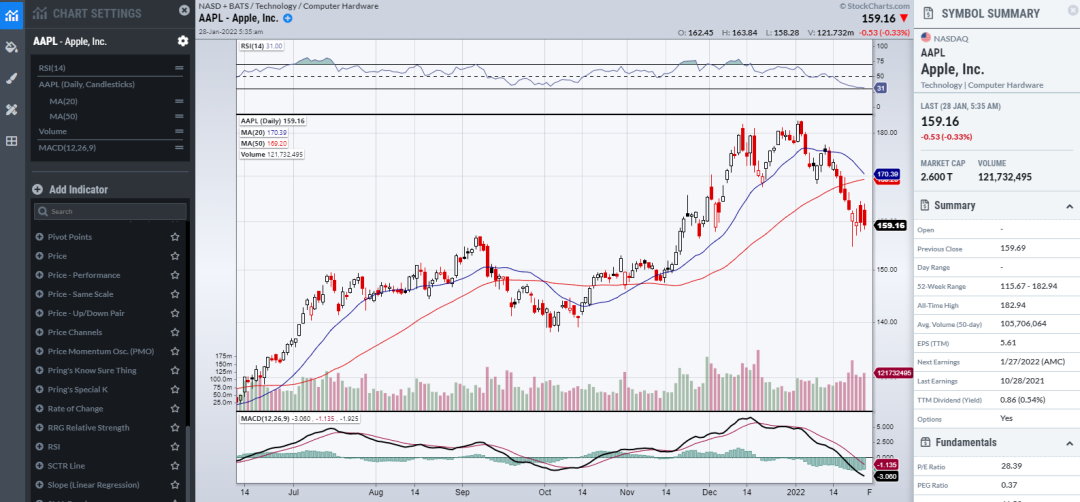

They appear to be the source with integrity. Paritech is the data provider that almost everyone uses although some people re-package it and pretend it is them selling it to you.

The basic technical stuff is enough without someone else’s further derivation of the obvious. I also have the Guppy package – shouldn’t have bothered. I also use their Chart Recognition Package (extra), which draws all sort of indicators on charts…I was sold after it drew support and trend lines over my manually drawn lines that exactly matched. Draw a trend line, for instance, shut the chart and months later it will alert you that the trend line has been broken. I used to use Metastock for years and then found OmniTrader – it is as programmable as Metastock with much slicker charts and signals identification with a great presentation of systems, alerts and strategies on the actual charts. For my modest portfolio, I can’t go past the charting and indicators available on CommSec if you trade with them as part of the package.If you wish to scan databases for technical indicators, breaks of resistance/support etc., my preference is Protrader, I have used IC investor and Vectorvest as well, VV is better if you want to search on fundamentals as well as technicals, are they worth the cost? I think so if you want to put the time in.If you just wish to view charts, then Commsec is fine, and Yahoo Finance (free) also is very good.If you are methodical/analytical, it has good outcomes. Is it worth it, depending on how much you use it. Lots of explorations can be written, and lots of program guides available. BC language is probably slightly easier to learn, but Metastock more powerful. There are lots of formula builders online with shortcuts. Might take a month or two to get up to speed. The other investment you need to make, however, is time in learning the programming language. If you are hardcore into your technical analysis and managing a decent size portfolio, I would say it is absolutely worth it. The software is typically around $1000 and a year of data $600. I have used a few over my journey, and the ones I like are Metastock and Beyond Charts (Metastock is US based and not always easy to deal with due to time differences, whereas BC is here in Melbourne and the support team are great).Check out Bullcharts (refer Brendon 02-9495-8400) …also provides live data charts.A few years ago while writing about trading software that you might find useful: Retrieved 18 August 2020.Over the last few days, we have received some questions about the type of charting software that we use here at Marcus Today. "Profitable candlestick trading strategies-The evidence from a new perspective". ^ Lu, Tsung-Hsun Shiu, Yung-Ming Liu, Tsung-Chi ().

Beyond Candlesticks: New Japanese Charting Techniques Revealed. Japanese Candlestick Charting Techniques (2nd ed.). Candlestick Charting Explained: Timeless Techniques for Trading Stocks and Futures. Guide To Technical Analysis & Candlesticks. "Understanding Japanese Candlestick Charts". Generally, the longer the body of the candle, the more intense the trading. A candlestick need not have either a body or a wick. In practice, any color can be assigned to rising or falling price candles. A white (or green) candle represents a higher closing price than the prior candle's close. A black (or red) candle represents a price action with a lower closing price than the prior candle's close. Thus, the color of the candle represents the price movement relative to the prior period's close and the "fill" (solid or hollow) of the candle represents the price direction of the period in isolation (solid for a higher open and lower close hollow for a lower open and a higher close). If the asset closed lower than it opened, the body is solid or filled, with the opening price at the top and the closing price at the bottom. If the asset closed higher than it opened, the body is hollow or unfilled, with the opening price at the bottom of the body and the closing price at the top. The range is calculated by subtracting the low price from the high price. The price range is the distance between the top of the upper shadow and the bottom of the lower shadow moved through during the time frame of the candlestick.

The body illustrates the opening and closing trades. Wicks illustrate the highest and lowest traded prices of an asset during the time interval represented. The area between the open and the close is called the real body, price excursions above and below the real body are shadows (also called wicks).


 0 kommentar(er)
0 kommentar(er)
